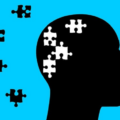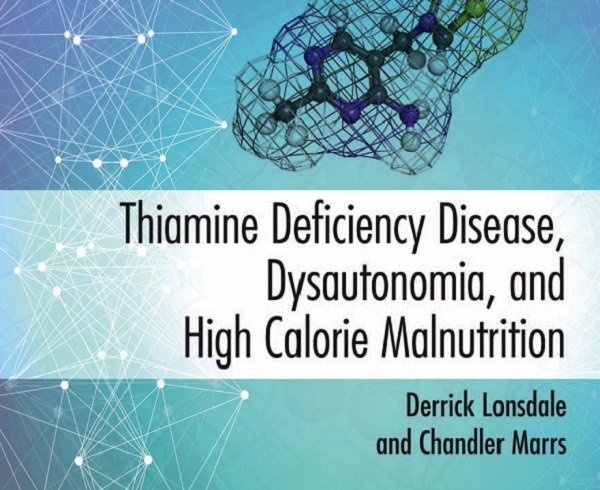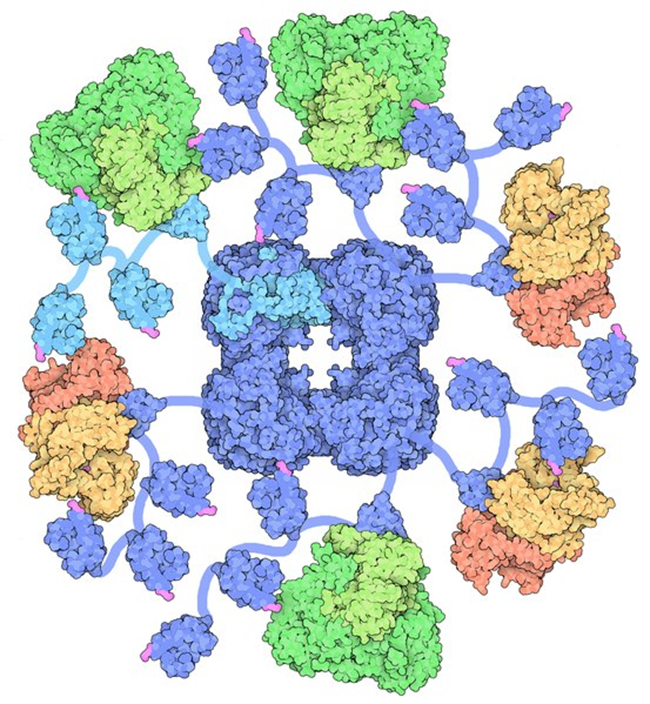Allergic diseases are a number of conditions caused by hypersensitivity of the immune system to typically harmless substances in the environment. They include hay fever, food allergy, asthma and anaphylaxis. Symptoms may include red eyes, an itchy rash, sneezing, runny nose, shortness of breath, or swelling. In many cases, allergy is little more than a nuisance but can be severe and even life-threatening.
Hypersensitivity, Intolerance, and the Vagus Nerve
Also called hypersensitivity reaction or intolerance, this represents a set of undesirable effects produced by a normal immune system. They include allergy and autoimmunity, effects that may be just uncomfortable or damaging, but occasionally fatal. An entirely new perspective has been introduced by the discovery that the vagus nerve, an important part of the autonomic (automatic) nervous system, modulates the immune response. The importance of this cannot be overemphasized, because it is forcing us to think differently about the whole subject of disease in general and how antiquated the present medical model is. I turned to the medical literature to see what has been published concerning the activity of the vagus nerve.
A publication, noting that the innate immune system is a defense mechanism of vital importance for our survival, goes on to note that excessive or unwanted activation of the system is as bad as too little. It illustrates the important philosophical concept “everything in moderation”. This important nerve has its beginnings in the brain and exhibits its anti-inflammatory effects through what is called the “cholinergic anti-inflammatory pathway”. This means that this nervous mechanism suppresses inflammation and absence of its activity allows it to continue. The word cholinergic refers to the chemical substance known as acetylcholine, the neurotransmitter that the vagus nerve uses. I mention this because it becomes important later in this article.
The vagus nerve has its origins in the brain and extends to the spleen, the organ that has a major effect on immune responses. It also extends to the alimentary tract, carrying messages from and to the brain and obviously having a major effect on the mechanical and biochemical control of the digestive tract. The objective of a review on the subject was to explore the supporting evidence for the importance of the vagus nerve in its anti-inflammatory characteristics and surprisingly, the evidence for its importance in epilepsy and depression, both “mental” conditions. The authors suggested that stimulation of the vagus nerve could be harnessed therapeutically in human inflammatory disorders such as inflammatory bowel disease, irritable bowel syndrome, post-operative ileus (bowel paralysis) and even rheumatoid arthritis. Since the discovery of the role of the vagus nerve in this reflex mechanism, numerous animal studies have shown beneficial effects of stimulation of this pathway in models of inflammatory diseases either through electrical or pharmacological stimulation of the nerve.
Eosinophilic Esophagitis (EoE) and Asthma
EoE, described only relatively recently, is a chronic allergic, immune-mediated disease associated with increased risk of comorbid atopic conditions (a form of allergy in which a hypersensitivity reaction such as dermatitis or asthma may occur in part of the body not in contact with the offending substance). A study reported 950 patients with EoE. Comorbid atopy including pollen, food and drug allergy, anaphylaxis and psychiatric conditions were more common in the EoE group than recorded in the general population. Attention deficit, hyperactivity disorder, allergic rhinitis, autistic disorder, autoimmune disease and diabetes mellitus, were also associated with EoE . Eosinophils are a group of white blood cells that act as mediators of allergic inflammation and are implicated in the pathogenesis of numerous conditions, including some cases of asthma.
Comorbidity in EoE
Comorbidity refers to a disease condition that exists at the same time as the primary condition being considered. Therefore, I would like to emphasize the many symptoms that occurred in a 14-year-old boy with EoE. Apart from the painful act of swallowing and chest pain that were due to the inflammation in the esophagus, he experienced other symptoms related to brain function. These symptoms included hyperalgesia (an exaggerated response to painful stimulus), emotional instability, headaches, fatigue, dizziness, panic attacks, ADD/ADHD/OCD, and coughing during sleep without being awakened. All of these symptoms are the result of chronic lack of efficient brain cell oxidation. The physicians that had been taking care of him for the first eight years of life considered his symptoms to be due to psychosomatic disease, in spite of the fact that he had experienced many episodes of ear infection. Even ear infections are now known to be due to inefficient oxidation in the ear mechanisms. The diagnosis of esophagitis was made at the age of eight years and for the next six years there was no response to any of the orthodox treatments that were attempted. He came to my attention at the age of 14 years. My contention was that he suffered only one basic condition and that was lack of cellular energy with its major effect in the brain. When blood tests proved that he had thiamine deficiency disease, my contention proved to be an appropriate conclusion that needs some explanation.
Inefficient Brain Oxidation, Dysautonomia, and Thiamine
One of the earliest signs of thiamine deficiency is abnormal activity of the autonomic nervous system, referred to as dysautonomia. Panic attacks are emphasized above because they are merely fragmented examples of the well known fight-or-flight reflex, mediated by stimulus of the autonomic system related to inefficient oxidation in brain cells. He was addicted to sugar, long known to be able to precipitate thiamine deficiency in the brain, like alcohol. It became apparent that the vagus nerve, as noted above as part of the autonomic system, was defective. Thus the inflammation caused by food allergy, perhaps with a particular emphasis on sugar, was continuing without the benefit of suppression by the vagus nerve. If this is understood by the reader, it should be noted that the esophagitis was secondary to the biochemical change produced by thiamine deficiency. This had resulted in failure to produce acetyl choline, the chemical used as a neurotransmitter by the vagus nerve. This neurotransmitter is used by many parts of the brain, perhaps explaining the symptoms that were referred to as “psychosomatic”. True, this was but one case and does not prove that it is the only cause of this disease. However, since thiamine is a key member of the complex chemistry, but not the only chemical that gives rise to energy synthesis, it emphasizes a principle that the true cause of this inflammatory disease was related back to energy metabolism. When this boy was treated with thiamine, his symptoms improved and his stature accelerated over a year of treatment. However, perhaps because he persisted in taking sugar, some of the symptoms related to esophagitis had continued.
There is a genetically determined disease called Familial Dysautonomia and one of the important effects of this disease is growth failure. My contention was that dysautonomia was the major underlying defect in this boy, possibly from birth. Since the dysautonomia was the result of thiamine deficiency, we can conclude that his growth failure was energy-related and correction of the deficiency accelerated his growth, aside from its benefit to the autonomic system. It also suggests that Familial Dysautonomia, a genetically determined disease, might have a relationship with energy metabolism responsible for the associated growth failure. Although thiamine deficiency was proved, it did not tell us why it had developed, but it had caused a persistent defect in autonomic function, giving rise to many symptoms interpreted as psychosomatic. There was a strong paternal family history of alcoholism, suggesting an underlying genetic relationship since alcohol and sugar both precipitate thiamine deficiency.
The Dysautonomia of Asthma
Many years ago I was faced with an eight-year-old girl who had suffered recurrent life-long asthma. She was so intensely allergic that virtually any mattress she had attempted to lie on had induced asthma. She had to use a plastic lawn chair as a bed because of this. Without going into the scientific details, I had concluded that she was suffering from dysautonomia affecting the bronchial tubes and treated her with megadoses of thiamine hydrohydrohchloride. She had immediate relief and when I saw her three months later the mother reported that she had only had two mild attacks of asthma. She is now grown up and has remained free of a scourge that had been virtually crippling. Again, I must point out that this is but one case. However, asthma is so common in children, a clinical trial would seem to be worth attempting. It was noted above that eosinophilia is often associated with asthma and it may be that a similar mechanism applies to this as it does in esophagitis.
Thiamine Derivatives
Many years ago, I was working at a multiple specialty clinic as a pediatrician. I had published what proved to be the first case of a six-year-old child who had vitamin B-1 dependency. Dependency is the term used when megadoses of the vitamin are necessary in order to produce prevention of the clinical effects of the specific vitamin deficiency. This child had an intermittent brain disease that was completely prevented with enormous doses of the vitamin. It was so intriguing and so exciting that I embarked on clinical studies on the therapeutic use of vitamin B1 (thiamine). As a result of these studies, involving much library work and clinical experimentation, I received a gift copy of a book from a Japanese scientist. This book, entitled “Review of Japanese Literature on Beriberi and Thiamine” was written by a group of university-based medical researchers known as the “Vitamin B Research Committee of Japan”. Written in 1965 and published in Tokyo, this was an English translation. It had been translated deliberately to try to inform Western physicians about the thiamine deficiency disease known as beriberi. Because this disease was so common in Eastern cultures, these scientists considered correctly that Western physicians were completely ignorant of the far-reaching effects of this disease. They had in fact given me the responsibility of trying to spread information about its devastating manifestations.
A whole chapter was devoted to a discussion of a group of compounds known as thiamine derivatives. They had discovered that there was a form of thiamine in garlic (allium sativum) that had powerful therapeutic properties and they had called it “allithiamine”. The prefix “alli” refers to the group of plants known as the allium species, of which garlic is perhaps the most important. This derivative is sometimes referred to as “fat soluble thiamine”, an unfortunate choice of words because the “fat soluble” refers to its remarkable capacity to deliver thiamine into body cells. In cell membranes there is a layer of fat known as the “lipid barrier”, so fat solubility refers to the fact that it can pass thiamine through this fat layer in the cell membrane. The Japanese scientists had synthesized a whole set of derivatives of thiamine and I began to study the one which is known today by its trade name, Lipothiamine. Its chemical name is thiamine tetrahydrofurfuryl disulfide (TTFD). Contrary to its term as “fat-soluble”, it is water-soluble and can be given intravenously. Allithiamine, with a capital A, is a trade name for TTFD.
TTFD and Epilepsy
Children with epilepsy are often extremely resistant to the various drugs that have been invented. A common method of trying to find the right drug is to admit the child to hospital and remove one drug while substituting another, on clinical trial. When a given drug for epilepsy is abruptly stopped, a dangerous state known as “status epilepticus” can occur. The epileptic seizure continues indefinitely and is difficult to interrupt. It may even be lethal. While I was working at the multidiscipline clinic, a 12-year-old child was being investigated by a neurologist and for reasons that had extenuating circumstances, the current drug that he was receiving had been stopped. He went into the dreaded clinical expression of status epilepticus. The responsible neurologist was unavailable and I was called to treat the emergency. For some basic reasons that are beyond the scope of this article, I gave him an intravenous injection of TTFD that promptly stopped the protracted seizuring. On the following day he remained seizure free and was walking around the pediatric ward talking to other patients. What truly amazed me was that when the neurologist became available, he remained completely disinterested in the benefit that had accrued from the intravenous use of TTFD and resumed the drug trial. Nor did he question me as to my reasoning for its use. This was back in the 70s and vitamin therapy was considered to be virtually a form of charlatanism, so this successful treatment only appeared to blacken my reputation.
A New Approach to Medicine
The idea of helping the body to heal itself is far from being new. It was voiced in 400 BCE by Hippocrates, who is somewhat casually known as the “father of modern medicine”. This article introduces factual evidence that multiple diseases, each known by its name, have a common underlying cause, namely the failed requirement of cellular energy. Even diabetes, noted above in the text, is now known to have thiamine deficiency as an important part of its underlying mechanisms. It has been shown here that three different conditions had been successfully treated with a single agent. This is not simple vitamin replacement. It is the skillful use of body chemistry and emphasizes that nutrients are really the only essential components necessary for the body to heal itself. For example, acetylcholine is an essential component of energy production and its deficiency would affect the inflammatory suppressive action of the vagus nerve as described above.
Of course thiamine is not the only non-caloric nutrient required, but it holds a vitally important place in energy synthesis and I have likened it to a leader in an orchestra, where the brain is the conductor. Many mysterious and complex illnesses are prevalent today. Beriberi is the great imitator because its many different facets are produced by the individual distribution of defective energy metabolism from person-to-person. Thus, the symptoms and physical expression vary and are often interpreted erroneously as a specific disease of unknown cause. Because energy deficit has not yet entered the collective psyche of doctors of medicine as a common cause of disease, many patients are suffering prolonged illnesses. Their polysymptomatic presentation and lack of current laboratory studies is confusing, often considered to be somehow caused by the sick psychology of the patient (psychosomatic). This is ironic since the symptoms are indeed from distorted electrochemical mechanisms “all in the head”.
We Need Your Help
More people than ever are reading Hormones Matter, a testament to the need for independent voices in health and medicine. We are not funded and accept limited advertising. Unlike many health sites, we don’t force you to purchase a subscription. We believe health information should be open to all. If you read Hormones Matter, like it, please help support it. Contribute now.
Yes, I would like to support Hormones Matter.
Photo by Alex Jones on Unsplash.


























